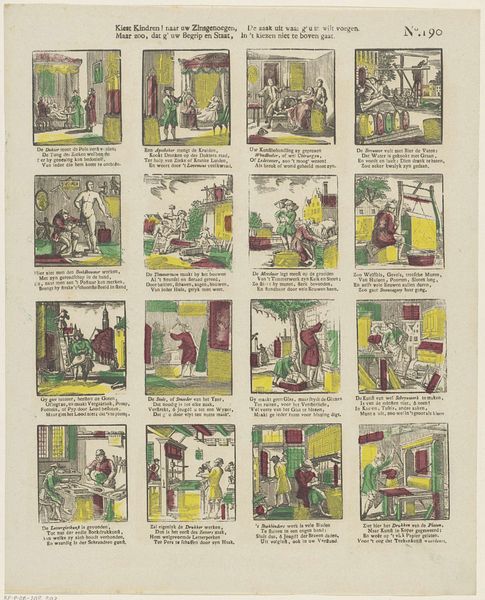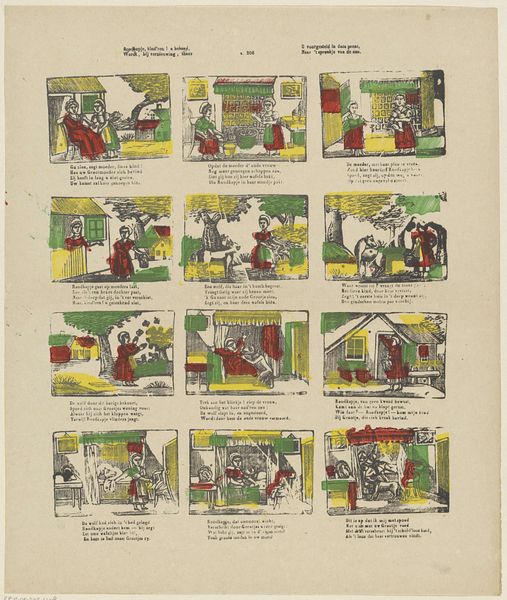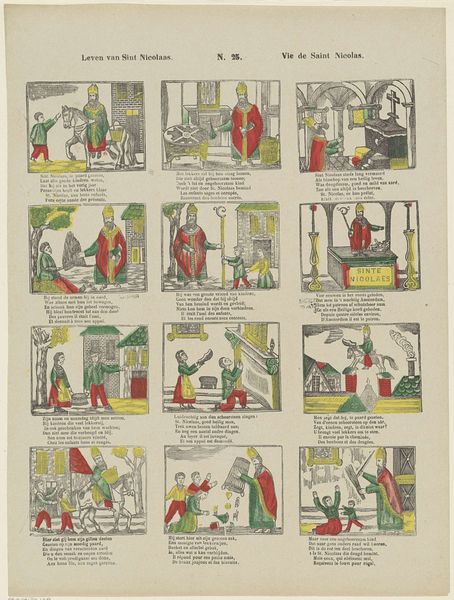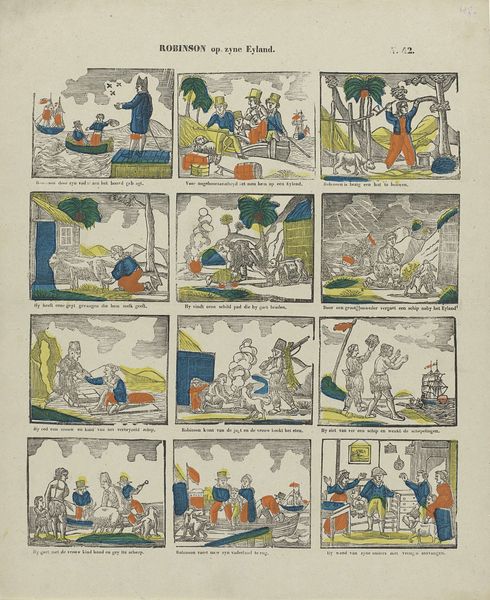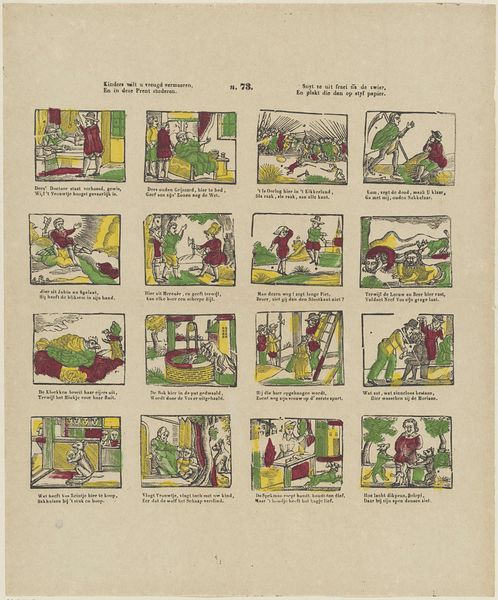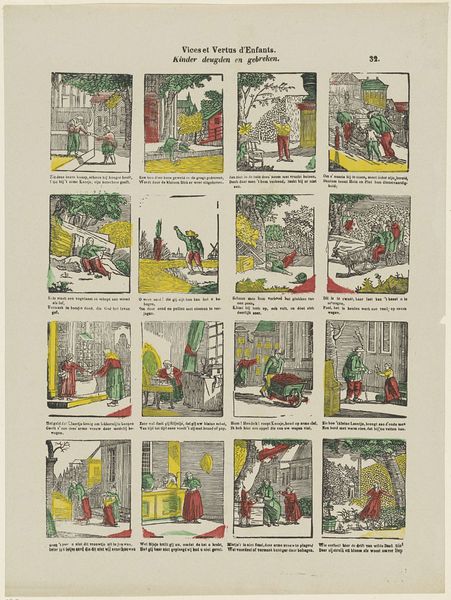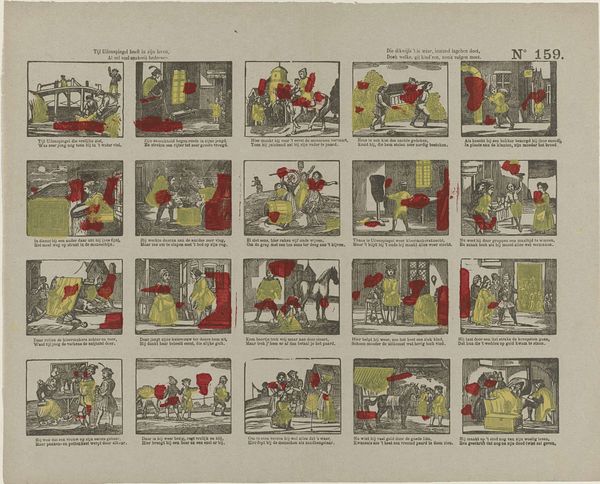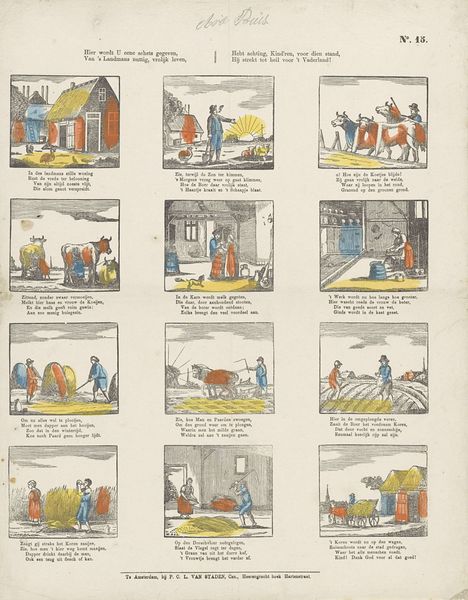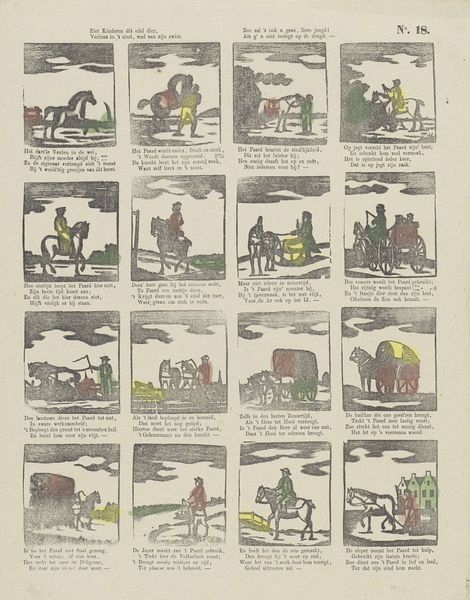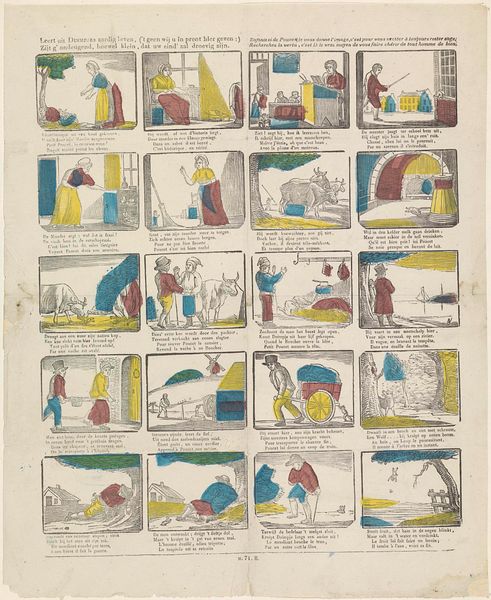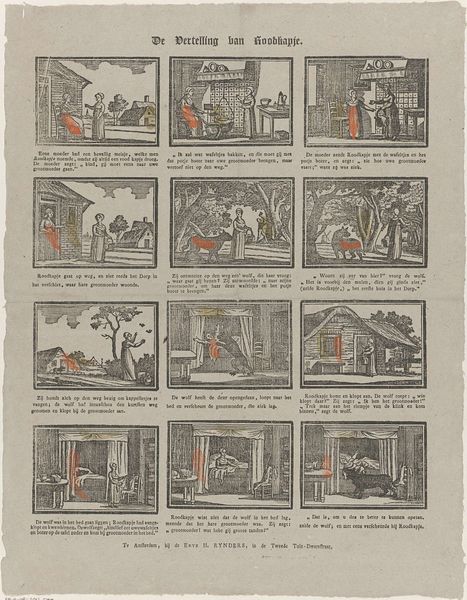
Ziet, kleinen, wat al raars u deze prent vertoont, / Hoe in verschillend vak de handel wordt gedreven, / Zoo wordt de noeste vlijt in iedren stiel bekroond, / Zoo vindt de kleinste stand nog iets om van te leven 1833 - 1900
0:00
0:00
graphic-art, print, etching
#
graphic-art
#
comic strip sketch
#
narrative-art
#
comic strip
# print
#
etching
#
old engraving style
#
genre-painting
#
cartoon carciture
Dimensions: height 387 mm, width 304 mm
Copyright: Rijks Museum: Open Domain
Editor: Here we have "Ziet, kleinen, wat al raars u deze prent vertoont..." It's an etching, dating somewhere between 1833 and 1900, by Glenisson & Zonen. It gives off the feel of an early comic strip showing tradesmen at work. I’m struck by how each little vignette seems to champion different types of labor. What stands out to you in this piece? Curator: What strikes me is how this seemingly simple image participates in the broader social discourse of the 19th century. Consider its function, perhaps distributed as a broadside. These types of prints, combining image and text, played a role in shaping public opinion and even promoting certain socio-economic ideals. What do you make of the choice to depict various trades? Editor: It feels like a celebration of the working class, and maybe a gentle push for social harmony? Almost like, "see, everyone contributes!" Curator: Precisely. Now think about who would have consumed this. Was it directed at the upper classes, to encourage empathy? Or to the working classes themselves, fostering a sense of pride and purpose within a rapidly changing industrial landscape? Notice the relatively rudimentary artistic style; who do you suppose might have commissioned this work and why? Editor: Given the cartoonish nature and clear messaging, perhaps it was created for educational purposes or as affordable moral instruction, especially for a newly literate working class? I hadn't considered the role of art as propaganda in that period, fascinating. Curator: And it’s a pertinent question still today. Art always functions within a social framework, whether overtly or subtly. By thinking about prints like these, we see art doing political work, helping to form perceptions about class, value, and social mobility. Editor: I see, examining how these images are not simply reflections of society, but active participants in shaping it. This really changes how I view art from this period. Curator: Indeed, by looking at its historical role we start to question our current public institutions!
Comments
No comments
Be the first to comment and join the conversation on the ultimate creative platform.
